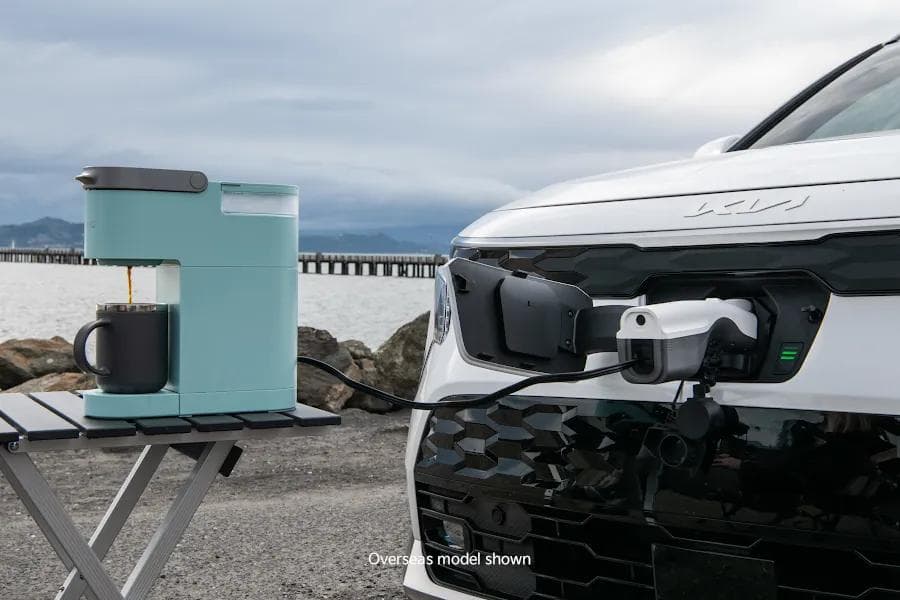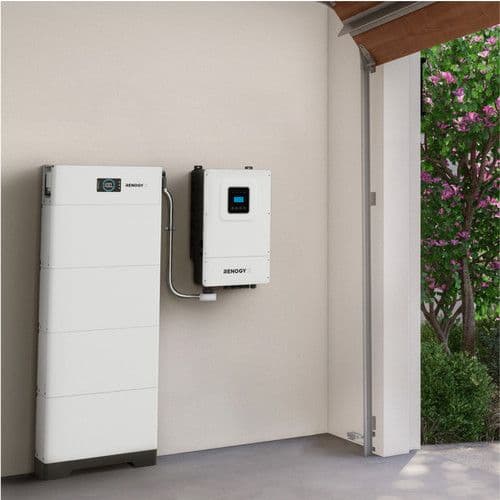Electric vehicles (EVs) are more than just a cheaper and cleaner way to drive, they can also double as a backup power source for your home. Thanks to Vehicle-to-Load (V2L) technology, most modern EVs can power household appliances, charge batteries, and even keep essential circuits running during a blackout. If you've ever wondered how to tap into this feature, this guide will walk you through the process in a clear, beginner-friendly way.

What is V2L, and How Does It Work?
V2L allows your EV’s battery to supply power to external devices via an adapter. Think of your car as a giant portable power bank. While many EV owners have used V2L for camping trips or outdoor activities, powering coffee machines, high-pressure hoses, and even electric BBQs - it can be also used to power your home.
While it's not a full home power replacement (yet), you can integrate V2L into your household energy system using a hybrid inverter. This lets you harness your EV’s battery to supplement home power needs—particularly during peak hours or outages.
MORE▶️ Which Electric Cars Have Bidirectional Charging?
What You’ll Need to Set Up V2L at Home
To use V2L effectively in your home, you need:
- An EV with V2L capability (see the list below)
- A hybrid solar inverter with an auxiliary AC or generator input
- An AC transfer switch to safely switch between grid and EV power
- A licensed electrician to handle the installation

Finding the Right Hybrid Inverter
A key component of this setup is the hybrid inverter, which acts as the middleman between your EV and home circuits. It allows you to draw power from your car and distribute it safely. After testing various options, we found the Deye 5kW single-phase hybrid inverter (SUN-5K-SG04LP1-AU) to be a solid choice. Here’s why:
- Supports single-phase power (compatible with most Australian homes)
- 6500W solar input via dual MPPT (for solar integration)
- Dedicated generator input (perfect for V2L use)
- 120A max battery charge/discharge current
- 40V-60V battery support
- Budget-friendly (~$2700 AUD)
Step-by-Step Guide to Powering Your Home with V2L
1. Connect Your EV to the Inverter
Instead of plugging in a traditional generator, you’ll connect your EV’s V2L adapter to a dedicated appliance inlet, wired to the inverter’s generator input through a 16A circuit breaker.
2. Set Up the AC Transfer Switch
A programmable timer will switch your home circuits from the grid to EV power at a set time—like during peak hours (e.g., after 5 PM). This ensures a seamless transition.
3. Charge or Directly Power Your Home
The inverter will:
- Charge your home battery (if available) until it reaches a set charge level (e.g., 90%)
- Directly power home circuits (up to 5000W load capacity)
- Use the home battery for extra power when needed
4. Monitor Power Usage & Set Limits
Your EV has a limit on how much power it can provide (typically 2300-3600W). The inverter’s settings ensure that it doesn’t exceed the safe limits of your car’s V2L output.
Real-World Example: Kia EV6 Owner’s Setup
“V2H mode enabled using the Kia EV6 V2L adapter! My electrician installed a 15A generator inlet with a manual changeover switch. After isolating the grid supply, I can power any combination of circuits I want from the car.
My garage is freestanding so it was easier to put the inlet on the side of the house. I have purchased a 10 m 15A extension lead with 2.5 mm² cores to reduce voltage drop.
No solar yet, but maybe I should have made it an electrically controllable changeover.
Also just had a 7 kW smart charger/EVSE installed under the Endeavour Energy (NSW) PowerSavers program."
Key Considerations Before Using V2L at Home
Before jumping in, here are a few important points to consider:
- Talk to a solar/battery expert to plan your setup and understand your EV’s power limits.
- Only licensed electricians should install the system to ensure compliance and safety.
- You’ll need separate cables for charging and discharging. You can’t use your EVSE charging cable for V2L—switching connectors is required.
- V2L currently supports single-phase power only. Homes with three-phase power won’t be able to run three-phase appliances from an EV’s V2L feature.
How Does V2L Compare to V2H/V2G?
V2L is a great DIY-friendly way to use EV power, but it’s not as seamless as Vehicle-to-Home (V2H) or Vehicle-to-Grid (V2G) solutions. Here’s how they compare:
| Feature | V2L (Basic) | V2H (Advanced) | V2G (Full Integration) |
| Power Output | 2.3-3.6kW | Up to 7kW (single-phase) | 7-22kW |
| Home Integration | Manual setup | Automatic switching | Full grid integration |
| Grid Export | No | No | Yes |
| Cost | Low ($3k-$5k) | Medium ($5k-$10k) | High ($10k+) |
While V2H and V2G require specialized (and expensive) chargers, V2L is the simplest way to start using your EV as a home power source right now.
MORE▶️ Bidirectional V2H and V2G EV Chargers Guide
Manufacturer Warranty Considerations
One grey area is warranty support. Most EV manufacturers don’t One grey area is warranty support. Most EV manufacturers don’t explicitly state limits on V2L usage, but some (like VW in Europe) cap bidirectional charging at 4000 hours or 10,000kWh. Keep an eye on any manufacturer updates regarding V2L, V2H, or V2G support.
Final Thoughts: Is V2L a Game-Changer?
An EV battery is the biggest energy storage device most people will ever own. Even if you only use a small portion of its capacity, V2L can help reduce electricity costs, provide backup power, and improve energy efficiency.
While V2L isn’t a full home energy solution yet, it’s an exciting step toward a future where EVs aren’t just transport, they’re also part of the electricity grid. And with new developments in V2H and V2G on the horizon, we’re only scratching the surface of what’s possible.
If you’re keen to get started, chat with an installer, check your EV’s capabilities, and explore hybrid inverter options. Your car might just become the most powerful battery in your home.
About the author
Stay up to date with the latest EV news
- Get the latest news and update
- New EV model releases
- Get money savings-deal

Privacy policy



